A Guest Post by Piper Mackay from www.pipermackayphotography.com.
Wildlife photography can be very exciting, which generally means your adrenalin is running on overdrive. It is too easy to be caught up in the action of the moment and just snap away at what you are witnessing. What you saw was so great, yet when you view your images they just don’t seem to have the impact that you experienced. I have put together a series of images of wildebeest, generally a very boring animal that is quite drab in color. This is to help illustrate how light, mood, and motion can bring powerful visual impact to your images.
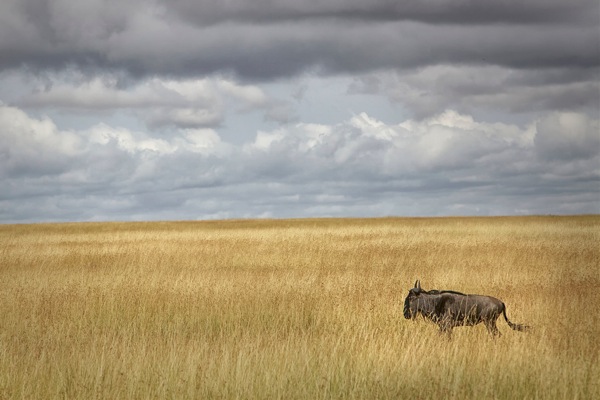
This is a Wildebeest for those of you who have not seen one.
Plan to go at the Best Time
Many species migrate or give birth at particular time in a particular location. Plan you trip around these extraordinary events. This was photographed during the annual wildebeest migration crossing the Mara River in Kenya. It has been said to be the greatest wildlife show on earth. The mass of the animals and the dust kicking up gives big impact to this image. Large numbers of any species will add impact.
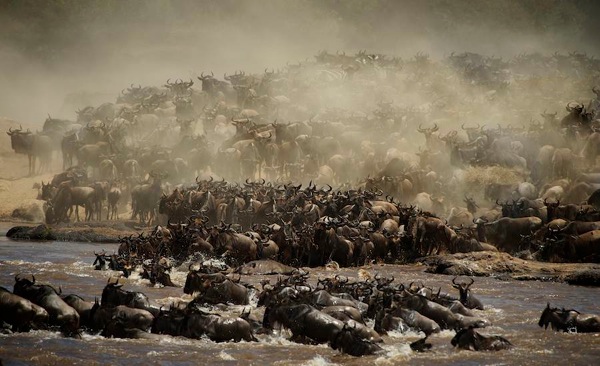
Backlighting and Side Lighting
It is natural to want the beautiful golden light on a wildlife subject as you see in the first photograph, but more dramatic can be adding backlighting or side lighting shown in the image below it. Take the safe shot and then get creative. Backlighting works great on the wildebeest beards and it also creates some rim lighting. Rim light is when backlighting creates a lit edge around the subject.


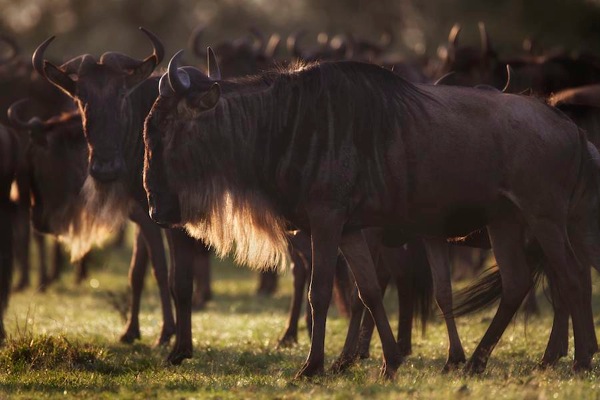
Look for Moody Elements such as Dust and Fog
This is another great time to add backlighting or side lighting. Backlighting will generally create a silhouette so I generally prefer to use side lighting in these situations. The light filters thought the elements for dramatic light and you can still see the details in your subject.

Add Motion to your Image with a Pan Blur
In the first image you can see the animals are in motion; notice I have a little backlighting going for added impact. However, by panning with the animals to create a blur in the background it shows a more dramatic sense of speed and motion.
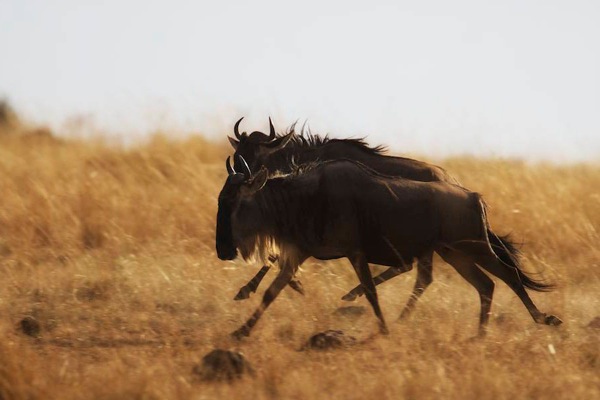
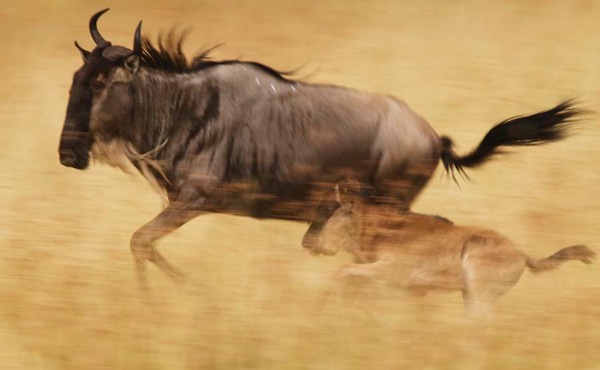
To shoot a pan blur you need to slow down your shutter speed, 1/60-1/30 generally works, depending on the speed of your subject. You need to focus on the eye’s/shoulder of your subject, pan at the same speed as your subject while holding down the shutter. Yes, this takes lots of practice and you will delete hundreds of images, but when you get one that works it is very exciting. This is something you can practice anywhere so when the opportunity comes you are ready.
Here is another set of images to show the impact and difference between a fast shutter speed stopping the action and a pan blur to show motion. Notice in the second image the front wildebeest are in focus while the rest of the images has a slight blur giving the viewer a more powerful sense of motion.
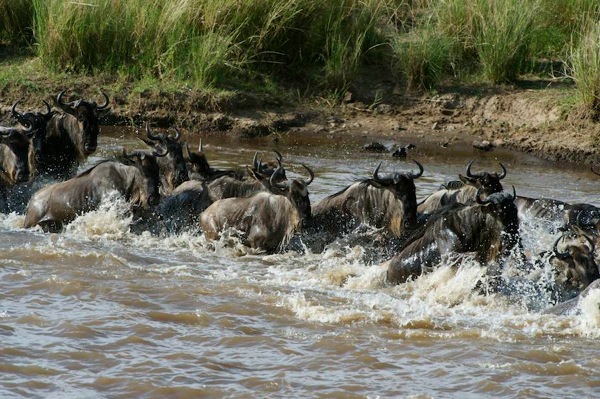
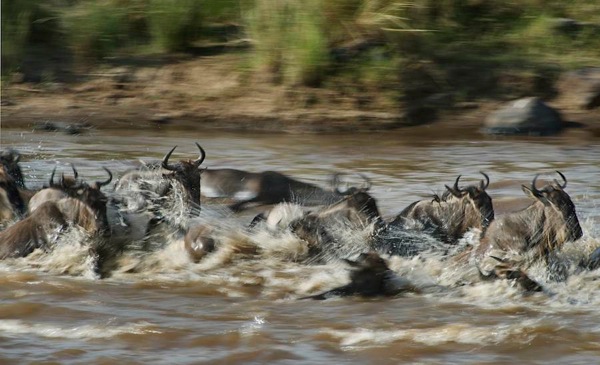
Slow Down your Shutter Speed
Stopping the action of animals running through water with a high shutter speed makes a dramatic image, but slowing down the shutter speed will add a different impact and variety to the story. Different from a pan blur, here you hold the camera still and slow down the shutter letting the moving element create the effect of motion. Water works great as well as tall grass that is blowing or branches moving is a tree. In the first image my shutter speed was very high to stop the action and the explosion of water. In the second I showed down the shutter to create a different mood and show the spray of the water. In the third I slowed down the shutter just a little more to really show the blast of the water.
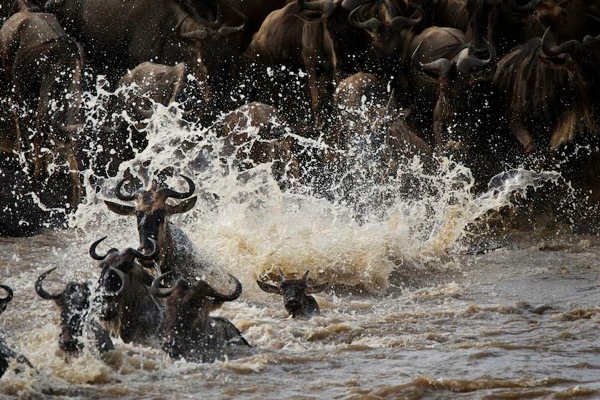
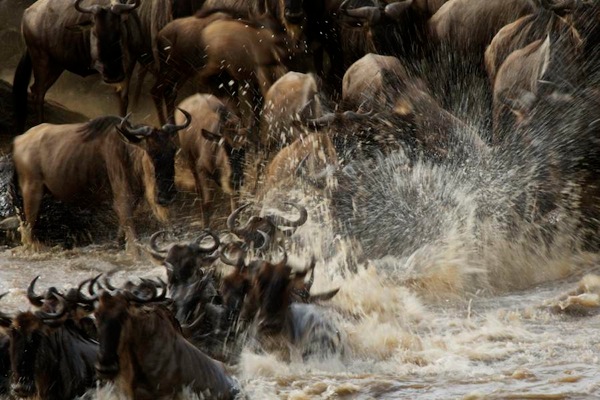
These simple tips will not only add impact and variety to your images but will make them stand out in a sea of imagery on the same subject.
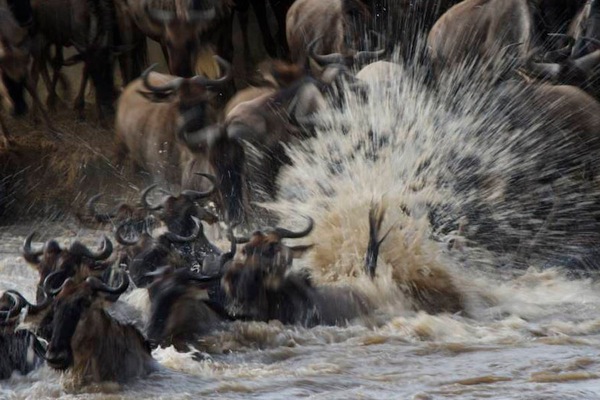
Piper Mackay is a professional travel and wildlife photographer whose work is heavily based in Eastern Africa. She is currently leading both wildlife and cultural safaris in Kenya, Tanzania, Rwanda and Ethiopia. Her work is represented by Getty images and she is and instructor for the Travel and Editorial track at Calumet. View her work at www.pipermackayphotography.com.
Post originally from: Digital Photography Tips.
Check out our more Photography Tips at Photography Tips for Beginners, Portrait Photography Tips and Wedding Photography Tips.
5 Big Tips to add Impact and Variety to your Wildlife Images
via Digital Photography School http://digital-photography-school.com/5-big-tips-to-add-impact-and-variety-to-your-wildlife-images?utm_source=feedburner&utm_medium=feed&utm_campaign=Feed%3A+DigitalPhotographySchool+%28Digital+Photography+School%29
Your photography is just amazing. I like it. Your tips is most valuable. Thank you very much.. Wish you all the best. May you live ling.
ResponEliminahow to remove clothing wrinkles in photoshop